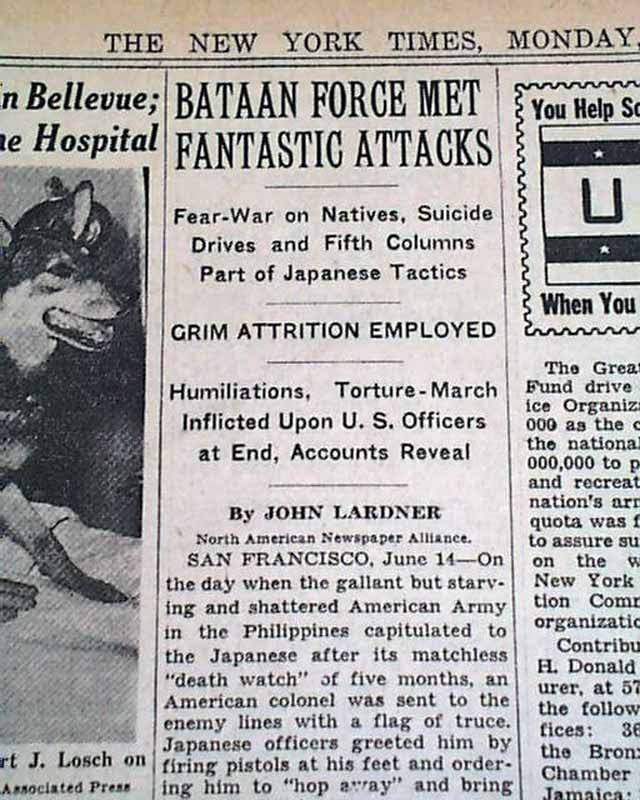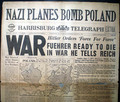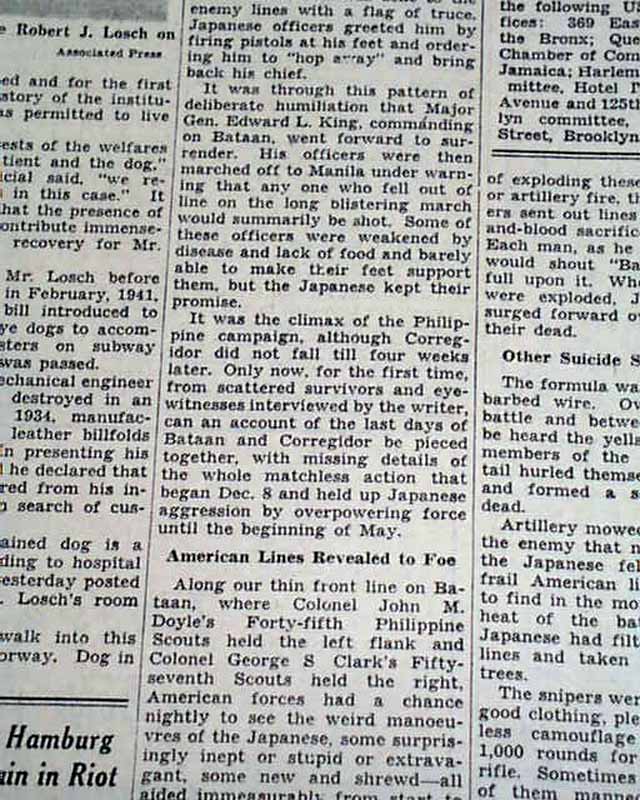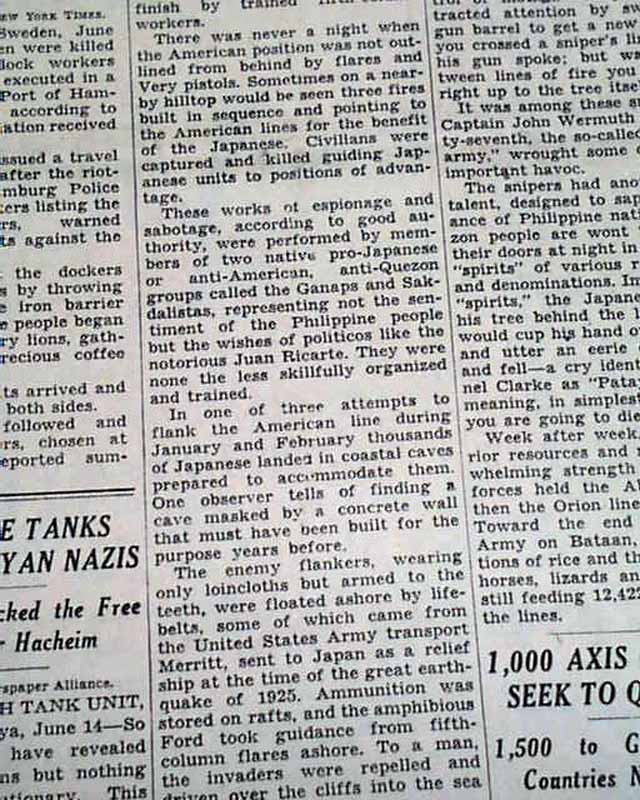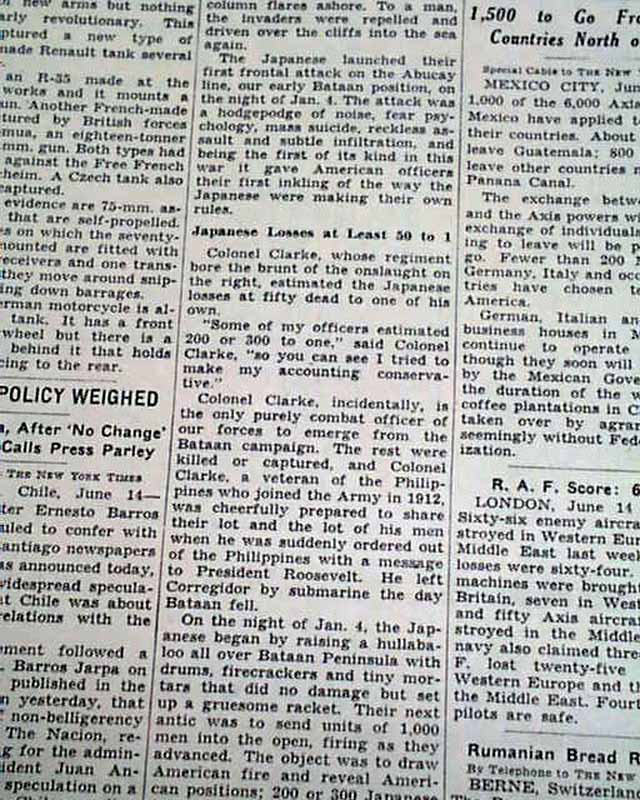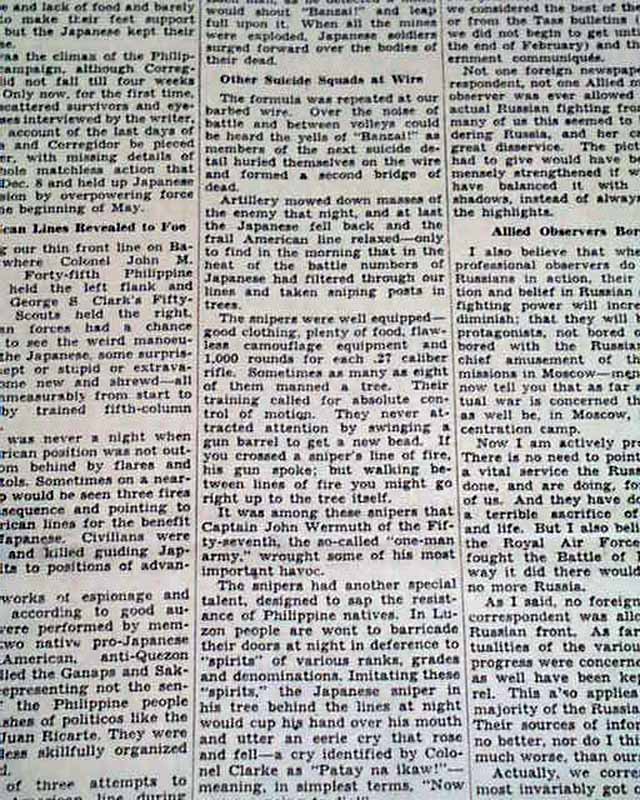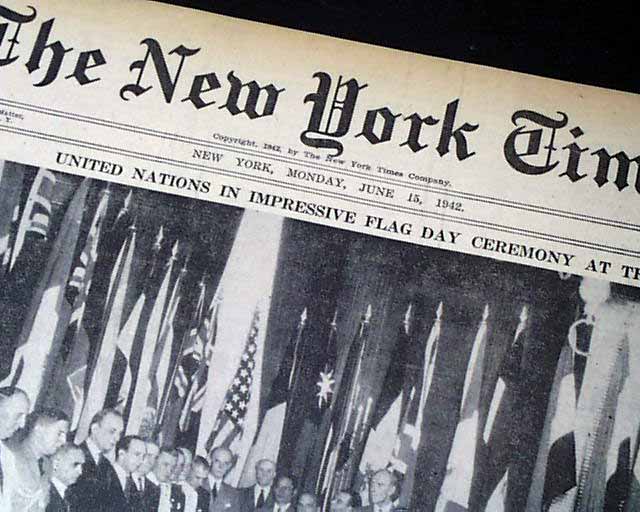Home > Back to Search Results >
Battle & death march of Bataan in 1942...
Battle & death march of Bataan in 1942...
Item # 721252
June 15, 1942
THE NEW YORK TIMES, June 15, 1942
* Post Battle of Bataan & death march
* Major General Edward P. King
* Allies surrender to Japanese
* Philippines Campaign eyewitness account
* World War II - WWII
The top of page 13 has a one column heading: "BATAAN FORCE MET FANTASTIC ATTACKS" with subheads. (see images)
Complete with 34 pages, light toning at the margins, generally nice.
AI notes: Major General Edward P. King, commanding the combined U.S. and Filipino forces on the Bataan Peninsula, made the grim decision to surrender to the Japanese after months of relentless combat, starvation, disease, and exhaustion had left his troops incapable of continuing resistance; approximately 75,000 men—12,000 Americans and 63,000 Filipinos—were taken prisoner, marking the largest surrender in U.S. military history. Immediately following the surrender, these troops were forced to endure the Bataan Death March, a brutal forced transfer of roughly 65 miles from southern Bataan to Camp O’Donnell, under scorching heat, with little food or water, and subjected to beatings, executions, and other atrocities by Japanese guards. Thousands died along the route, with estimates ranging from 5,000 to 10,000 Filipinos and 500–650 Americans, while countless others succumbed later in captivity due to starvation, disease, and mistreatment. King himself survived the march and spent over three years as a prisoner of war, but the event became a symbol of both Japanese brutality and the extreme hardship faced by Allied soldiers in the early Pacific War, underscoring the impossible conditions under which King made the harrowing decision to surrender.
Category: World War II


